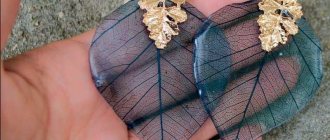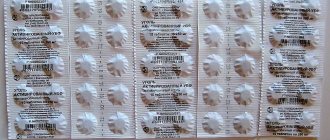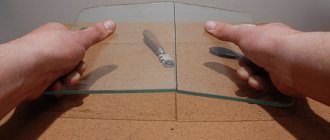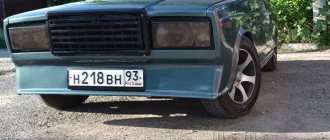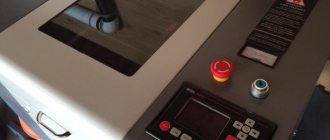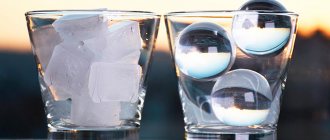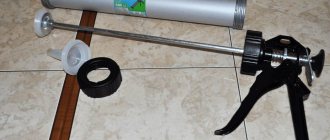Distilled water is a pure liquid that does not contain any impurities. Mainly used in industry and medicine, but sometimes it is very necessary in everyday life. For example, for an aquarium, iron, humidifier, car battery. And the question often arises - where to get distilled water? After all, few people know how to get it themselves at home.
Complex and expensive methods are only suitable for the laboratory. An ordinary person sometimes needs to quickly navigate and obtain a distillate using the means at hand. Of course, the quality will differ from that obtained industrially or in the laboratory, but it is quite suitable for domestic needs.
Definition
In essence, it is an ordinary liquid obtained by evaporation or separation into components of various compositions. As an example, imagine an ordinary kettle (saucepan or any other closed container) in which an aqueous solution is boiling. During boiling, small droplets form on its lid - this is distilled H2O. If you do not cover the vessel during the heating process, moisture will settle on nearby surfaces that are touched by the steam.
The substance prepared by evaporation excludes the presence of impurities: both harmful and beneficial. The condensate is considered absolutely clean. Purity is explained by the difference in temperature conditions at which various components evaporate and their molecular weight.
In addition, the distillate can be obtained by freezing. To do this, the liquid medium is partially frozen. First of all, that part of the mixture that does not contain foreign elements turns into ice. Subsequently, the ice pieces are thawed in a sterile container.
We figured out how distilled water is made. Now you should find out what it can be useful for.
Operating principle and device
The operating principle of all devices is the same . Water is poured into one container, which is brought to a boil at maximum temperature in order to turn it into steam.
It, in turn, flows through the outlet pipes into another chamber - the cooling chamber. Due to contact with a cold environment, the steam condenses and turns into water. This is the distillate.
Application
The purified aqueous solution is used for various purposes:
- In medicine, namely in pharmacology. This universal solvent is used to dissolve medications.
- When conducting laboratory research and processing specialized equipment. For uninterrupted operation of high-precision instruments, cleaning them with ordinary tap liquid is unacceptable.
- In industry to extend the service life of mechanisms. Ordinary H2O contains many trace elements, some of which can lead to plaque formation. Sedimentation causes breakdowns and disables working units.
- In heating systems. Sedimentary substances do not clog pipes, eliminating pressure drops and circulation disruption.
- In the manufacture of electrolyte for batteries.
- For cosmetic procedures, as it perfectly cleanses the skin.
- As a refill for air conditioners, steam generators, irons and other home aids. When using distillate, limescale does not form. Lime is known to significantly shorten the life of household appliances.
- And, of course, for direct consumption. Anyone who cares about their own health should know how to prepare distilled water at home for drinking.
In medicine
The composition obtained through distillation does not contain any foreign microelements, therefore it is widely used in pharmacology to create various medicines and cosmetic products. In this area, its usefulness is truly priceless.
In addition, people often use it for medicinal purposes. However, you should not be overzealous with consumption. Of course, the aqueous solution that has undergone distillation does not include harmful substances and impurities. It prevents many pathogenic bacteria from entering the body, helping to avoid infection. But at the same time it is completely “lifeless” moisture. It does not contain salts, minerals or other components that are beneficial to health. Therefore, when practicing drinking distilled H2O, moderation must be observed. The majority of the total volume of water consumed should be liquid filtered by conventional methods.
At home
The distillate is perfect for filling aquariums. Harmful elements found in ordinary tap water can kill pets. Accordingly, a liquid medium purified by evaporation is much preferable for them. When planning to create good living conditions for your pets, do not forget to purchase a special filler-additive at the pet store, which contains all the microelements the fish need.
Houseplants will also benefit from periodic watering with this mixture. The main thing is not to forget to fertilize them regularly. The scope of application for domestic purposes is very wide, so everyone needs to figure out how to distill water.
What is a distiller used for?
Distilled liquid has a certain feature: it is completely free of any impurities.
That is, there are not even microelements in the treated water. The purified liquid is used quite widely: - in medicine (for the preparation of medicines);
— in industry (for the operation of devices that can only be used with treated water);
— in car batteries;
- at home. Some people use this water for food. Although it is not recommended to do this all the time.
Receipt methods
In laboratory conditions, a distiller is used for this - special flasks that are connected using a constantly cooling tube. One container, located on top, is heated until it boils. The boiling state is maintained, steam is formed in the connecting element, which gradually flows into the second vessel.
According to another technique, the liquid substance is partially frozen. This technology is less economical, and therefore is used much less frequently. After all, everyone knows about the need to economically use the most important useful resource on the planet.
Above we talked about methods for obtaining a purified solution in laboratories equipped for this; now we should describe methods for preparing distilled water at home.
The feasibility of defending
To get the desired liquid from regular tap water, you need to let it sit. The contents of the water supply system pipes, unfortunately, cannot boast of cleanliness. The liquid environment that enters our homes and apartments contains a large number of different impurities. Not all of them are useful for the human body. The life-giving moisture they contain can harm not only people, but also animals, plants, and household appliances.
The most dangerous component is chlorine. Its presence is explained by the mandatory chlorination of drinking water before serving to consumers. This element effectively eliminates pathogenic bacteria, but at the same time it is not safe for humans. In addition to Cl, there are a considerable number of metallic and volatile compounds that must be disposed of before use.
1.5 m3/h For process water
1.5 m3/h For process water
MBFT-75 Membrane for 75GPD
That is why, before drinking H2O, it should be collected in a clean, open container and left at rest for at least a day. In the first few hours, chlorine impurities will evaporate, then heavy metals and salts will begin to precipitate. After a certain time, the liquid must be drained. This must be done very carefully so as not to provoke mixing of the precipitate with the clean solution. Remember, only the top ¾ of the settled mixture can be used for household needs, for drinking and cooking. It is this part that will be used to prepare the distillate.
What you need for distillation
Depending on the method chosen, different items may be required to complete the process. The technologies that we will describe in detail today imply the presence of:
- large saucepan with a transparent lid (convex);
- deep tray for collecting condensate;
- stands for collecting container;
- plastic and glass bottles;
- ice;
- a suitable tank for rainwater.
Solar distiller for the dacha
Some craftsmen manage to develop unique equipment with their own hands, which is applicable, for example, for summer cottages or for areas where access to clean fresh water is limited. Thus, a certain resident of the USA created an installation - a solar distiller, with the help of which up to 5 liters of clean water are distilled per day.
Article on the topic: Interior design in high-tech style - basic principles, features and application depending on the room
A device for distilling liquid using solar heating. An economical and quite effective installation that can become a traditional tool for summer residents
The design of a “dacha” solar installation is based on two modules:
- Parabolic mirror
- Evaporation chamber
The parabolic mirror is made from available materials. In particular, ordinary foil, which is used in the kitchen, was used to create a reflective surface. The surface of a Mylar sheet is covered with foil, which is placed in a frame made of aluminum strips (by the way, there are foil Mylar sheets on sale).
As part of the design of the solar distiller, the mirror is located in the lower part. An evaporation chamber is installed above, consisting of an aluminum pan covered with a plastic panel. The bottom wall of the tray is painted black (for better absorption of heat from the sun's rays).
The plastic panel of the tray acts as a capacitor. Water droplets are collected from the inner surface of the panel through a discharge tube. Distilled water is discharged through a tube into a collection container.
The system works by reflecting the sun's rays with a mirror, focusing and directing the radiant energy to the bottom of the tray. Untreated water is heated in the pan (theoretically up to 90ºС), evaporates and condenses on the surface of the plastic panel.
An interesting design to think about and repeat. True, it is not without the following disadvantages:
- manual control of mirror position,
- low productivity (no more than 5 liters per day),
- significant dimensions of the structure (mirror area about 2 m2).
Nevertheless, the idea itself deserves attention and should be especially interesting for owners of country houses, country farms, and agricultural businesses where there are problems with drinking water.
Article on the topic: DIY eggplant Christmas tree. Christmas tree from a plastic bottle
The solar distillation plant is attractive, among other things, due to its energy efficiency. And this is an important argument for any user.
How to make distilled water at home
Making it at home is not difficult at all. It is enough to choose the most suitable technique and devote a little time. The first two techniques, which we will discuss below, will be based on collecting condensate, since droplets of moisture formed during intense evaporation are the aqueous solution we need.
Method one - Boiling
This technology is most often used to make distillate at home.
- Take a large stainless steel container, approximately 20-30 liters. Fill it about half full with regular tap liquid.
- Place a special stand inside the pan on which a bowl will be placed to collect condensation. If a mounting device is not available, you can place a deep plate directly on the surface of the liquid contents. Close the entire structure tightly.
- Gradually, small droplets will begin to form on the inner surface of the boiling vessel.
- Now turn the lid over with the handle facing inward and place ice in the recess. Due to the temperature contrast, the intensity of condensation will increase.
- Turn up the heat and bring the substance in the large bowl to a boil. You will see how more and more particles of life-giving moisture will roll into the collection bowl. All you have to do is be patient and wait until there is enough quantity.
- Now turn off the heating and open the container.
- Remove the plate with the distillate. Don't get burned!
- Wait until the purified solution cools completely, after which it can be used.
Method two - distillation using two bottles
Distillation at home can be carried out using this method:
- Take two glass bottles. The neck of one should be slightly bent (curved).
- Fill a vessel with a level neck about halfway. So that there is 12-14 cm of free space in the upper part.
- Connect the containers together (at the neck level) and secure firmly.
- Fill a large saucepan with regular tap liquid and bring to a boil. There is no need to fill to the brim. The main thing is to make sure that the contents cover ⅔ of the bottle placed inside.
- Bend the junction of the vessels 30 degrees. Hold an empty container on the outside of the boiling tank.
SF-mix Clack up to 0.8 m3/h
SF-mix Runxin up to 0.8 m3/h
SF-mix manual up to 0.8 m3/h
- Place an ice pack on the condensation bottle.
- Collect drops of the purified aqueous solution until you have the required amount.
Method three - collecting rainwater
This life-giving moisture is a natural distillate. All you need to do is collect and store clean water.
- When it rains, place a suitable tank, bucket or basin outside. Remember, collection containers should not be placed near buildings or trees to prevent contaminated H2O from flowing into them.
- Close the filled container to prevent dirt particles from getting into it and let it sit for 1-2 days.
- After settling, you can pour the contents into convenient jugs, cans or bottles. The main thing is that they can be hermetically sealed.
Method four - freezing
Another distillation technique. Unlike those listed above, the difference in freezing temperatures of various substances is of key importance.
- Fill any suitable bowl or bottle with ordinary tap liquid. Place the filled container in the freezer.
- When about half of the contents turn into ice, remove it and melt it. This will be the purified H2O you need. The part that did not have time to freeze should be poured out. It is in it that all foreign impurities are contained.
Step-by-step instructions for obtaining distillate
Before you start producing distilled water from tap water, you need to take a number of preparatory measures.
Pour liquid from the tap and leave it to settle . The container should not be covered with anything or moved. Therefore, it is necessary to decide in advance on the place where the water will be protected from debris from entering from above.
This stage is required to purify water from hydrogen sulfide, chlorine, salts and other impurities. This will take about 5-6 hours. The longer it stands, the better.
After which the liquid is carefully drained so as not to overdo it . Next, choose one of the methods for making distilled water at home using improvised means.
Distillation using 2 different bottles
You will need 2 glass bottles. It is advisable to take one with a curved neck so that if distilled water gets into it, it cannot flow into another container.
Sequence of further actions:
- Pour regular water into one bottle, leaving 12-13 cm free from the top.
- Connect the vessels to each other by securing the necks with tape.
- A large stainless steel saucepan (about 20 liters in volume) filled with water is placed on the fire and brought to a boil.
- Immerse the bottle structure (full bottle down) in boiling water so that it disappears up to the neck. The inclination should be approximately 30 degrees. You need to hold onto the upper vessel with your hand, which will protrude from the outside of the pan.
- An ice pack is fixed on the top bottle to create a cold barrier (promotes the formation of condensation).
- Continue distillation until the upper container is full.
Boiling with a kettle
In the process you will need 4 glass glasses and a kettle, into which water is poured and placed on the stove. While it is boiling, wash the glasses under the running tap. Just do not use detergents and a sponge (rag) so as not to leave unwanted impurities on the glass (this will reduce the quality of the resulting distilled water).
The question immediately arises: “Why take exactly this number of glasses?” The fact is that when collecting condensation, you cannot hold the glass in your hand for a long time due to its heating. Then they change it to another cold one.
Instructions:
The water in the kettle is first left to settle for at least an hour, only then placed on the stove and waited for it to boil.- If there is a plug on the spout, remove it so that the steam can escape freely.
String the glasses one by one and pour steam over them from the inside. In this case, you need to wait until drops flow down the glass, only then remove it. The container into which distilled water will then be poured is treated in a similar way. - Place the glasses on the balcony or in the refrigerator to cool.
- The kettle, which has already cooled down, is turned on again to let out steam. A collection vessel is placed under the spout.
- Then, one by one, they bring the glasses to the stream of steam. The moisture formed inside them will flow down. This is the distillate.
In this way, you can expel about 250 grams in 30 minutes.
How to distill by freezing?
Perhaps the easiest way to obtain distilled water at home is to freeze it. The downside is that there should be no foreign odors in the freezer, but preferably more snow . It is unlikely that you will be able to achieve the desired result in a small refrigerator.
Take a glass or plastic bottle and fill it with settled tap water. Then they put it in the freezer. Now they wait until the water partially freezes and drain the liquid residue.
It contains unwanted impurities. Now the ice is defrosted at a temperature of no more than 25 degrees.
It is recommended to store such water in a hermetically sealed container, away from heating appliances and out of direct sunlight. If you adhere to these rules, then the shelf life of water is unlimited.
Rainwater harvesting
The method is suitable for suburban residents living in ecologically clean areas .
The easiest way to get distilled water is from rainwater. Why is it collected in a barrel or other large container? After 1-2 days, the water is poured into a sterile container and stored for long-term storage.
In winter, you can make distillate from snow . It is enough to collect it in a clean tank and wait until it melts. It is important that the snow is freshly fallen and does not have time to become saturated with harmful substances from the outside.
Prepare by evaporation
The first step is to prepare the equipment - an analogue of an industrial distiller, but using improvised means.
You will need a saucepan with a convex lid (preferably transparent, but not necessary), a deep bowl and ice (plain water is frozen in special molds).
Next steps:
- Pour water into the pan to a third of its volume so that the installed plate does not tip over.
- If you use fresh tap water, you need to wait a few hours until the chlorine and other impurities are eliminated from it.
- Place it on the stove and turn it on.
- Place a bowl inside into which you plan to collect the distillate.
- Cover the top with an inverted lid.
- As soon as the water begins to boil, ice is placed on top.
Due to heating, steam begins to be released, which, coming into contact with the cold at the top, will condense and settle in the form of drops on the outside of the lid and flow into the plate.
When it is filled, the water is poured into a separate vessel. But before doing this, it is washed twice - first with ordinary water, then with distilled water.
How to extract from plants?
This option is suitable for travelers, but it requires a lot of time and patience . Distillation can be organized using any source of water. In particular, these are plants that grow in deserts.
But not all types of vegetation are suitable if you want to get drinking water without dangerous impurities. Cacti and ferns are ideal choices.
Proceed as follows:
- Dig a hole somewhere under the sun and place a plastic bottle in it so that it goes completely underground.
- Greenery is placed around and covered with polyethylene on top. Its edges are fixed with stones to create a seal.
- Under the influence of heat, condensation appears on the walls of the bottle. Then the leaves of the plant are placed inside, which will enhance the process of moisture release.
How is it done using special equipment?
Special equipment that can be used to obtain distilled water means:
- distiller;
- alcohol mashine.
Distiller
This is a device whose operation is based on two components : heating the liquid in a separate compartment and subsequent cooling of the resulting steam in the refrigeration chamber.
As a result, the purified liquid condenses. Depending on the volume of distillate produced, there are floor-standing and table-top devices.
How to control tabletop distillers:
- Pour water inside.
- The unit is turned on using a special button. As a result, evaporation of the liquid and further condensation begins.
- At the end of the cycle, the device turns off automatically.
About 1 liter of distilled water is produced per hour.
Operating principle of home distillation equipment:
- It is connected to the water supply system, from where water is pumped directly.
- In the evaporation unit, water is brought to a boil using an electric heating element.
- Steam begins to be released, which enters the condenser chamber and is instantly cooled with tap water.
- The released condensate flows into a container for receiving the distillate.
In this way, it is possible to obtain about 150 liters of ultrapure water.
Alcohol mashine
This device is nothing more than a homemade analogue of an industrial distiller. Because it has the same operating principle.
Instructions for use:
- Pre-rinse the inside of the device with clean water.
- Then pour the settled water into the distillation cube and close it tightly.
- To supply and drain cold water, you need to cut the rubber hose into 2 pieces: one is connected to the tap and fitting of the device, the second is threaded onto the drain fitting and the end is lowered into the drain hole.
- Place the device on the fire and wait until the water begins to boil.
- A container is placed at the receiving tap to collect distilled water, into which it drips during the distillation process.
Cold water should enter at the bottom of the refrigerator and exit from the bottom. Then the vapors cool evenly, and the water consumption will be small.
Fundamental conditions for obtaining distillate in a moonshine device:
- The water in the distillation cube should boil;
- boiling is necessary throughout the process;
- cold water must flow into the device without stopping;
- the product drain valve must be open.
Advantages and disadvantages of homemade distillate
When thinking about creating or purchasing a water distiller at home, you should know about all the pros and cons of using a purified composition. Yes, such a solution really has a beneficial effect on the human body. Drinking without foreign impurities:
- promotes successful weight loss;
- helps cleanse the kidneys and liver of salt deposits;
- strengthens the immune system;
- eliminates the possibility of allergic reactions;
- effectively removes toxins.
However, systematic excessive consumption of a “lifeless” liquid medium can cause serious harm. You should not drink this substance uncontrollably. In large doses, it can lead to disruption of water-salt metabolism. A constant lack of essential microelements provokes the occurrence of various diseases.
Quite significant disadvantages (albeit not so dangerous) are: unpleasant taste and inability to quench thirst well. It is much more difficult to get drunk with distillate than with regular H2O from the tap.
Doctors still recommend giving preference to other filtration methods. There are various types of cleaning devices available on the market now. Thus, it produces excellent water treatment devices, and also provides their installation and warranty service. The high quality of the products manufactured by this company has been repeatedly confirmed by many positive reviews from grateful customers. Those who have already tried the product recommend it as the most reliable, durable and affordable.
Myths about distilled, rain and melt water
Water is often attributed either excessive usefulness or harmfulness. Objectively assessing the benefits and harms of water for humans, we come to the following conclusions.
About the composition
Is the composition of distilled H2O truly balanced and contains the optimal amount of minerals? The answer is no, because even according to the indicators indicated by GOST, it is obvious that the proportion of impurities is negligible. For example, if iron in drinking water can be about 3-1 mg/l, then in distilled water - no more than 0.05 mg/dm3, aluminum in drinking water - 0.5 mg/l, and in distillate - 0.05 mg /dm3.
When drinking purified water, pure H2O with a small amount of microelements enters the body. It is necessary to get fortified and get useful substances from fruits, vegetables and other food products.
About the harm
Does water wash away beneficial substances from the body? No, this statement is completely false. H2O is not able to “take” the necessary elements from cells, but takes part in metabolism, removing excess, “waste material”.
How to properly make distilled water using special equipment
When talking about specialized devices, we usually mean machines for moonshine brewing or distillation.
Distiller
The principle of operation is to heat an aqueous solution in one section of the disciliator and lower its temperature in another section. The resulting condensate is a purified liquid.
AMETHYST - 02 M up to 2 cubic meters/day.
Aeration unit AS-1054 VO-90
Main table dispenser AquaPro 919H/RO (hot and cold water)
To carry out the cleansing process, you must:
- fill the desired compartment of the unit with life-giving moisture from the water supply system;
- click on the activation button;
- After the substance evaporates and condenses, the machine turns off automatically.
The productivity of such a device is approximately 1 liter per hour.
Alcohol mashine
Another invention of mankind that is worth keeping in mind when wondering: where to get distilled water for drinking. The unit operates on the same principle as a distiller.
To obtain the distillate:
- equipment is thoroughly washed;
- fill the distillation cube with settled H2O and close;
- for supply and discharge, take two pieces of rubber hose, one is mounted on the tap, the second is secured to the outlet fitting;
- heat the complex, bring the contents to a boil;
- a purified aqueous solution will flow out of the outlet during distillation and cooling.
The coolant should enter from the bottom of the refrigerator and exit from the top.
To obtain the desired result, certain conditions must be met:
- the liquid in the distillation cube must be ensured to boil and maintain the required temperature;
- cold water must constantly flow into the device;
- the diverter valve must be open.
Storage
It is very important not only to know how to obtain distilled water, but also how to properly store it.
The collected condensate or melted liquid must be poured into clean, prepared containers. Provided the container is tightly closed, it will last quite a long time, because it does not contain any foreign impurities.
When preparing the container, it is necessary to perform double rinsing. First, wash it with regular detergent, then rinse with a small amount of a substance that has already undergone distillation. Only after these manipulations can the vessel be filled with a clean solution.
Testing
Testing the quality characteristics of the resulting liquid medium is not difficult. The test is based on the distillate's inability to conduct electricity. Therefore, it is necessary to perform an electric discharge and observe the result.
- Take an ordinary 220 V light bulb and screw it into a socket with a wire and plug.
- Divide the electrical wire into two parts and strip the ends. Don't forget to leave the cambric where you will hold the cord with your fingers.
- Plug the plug into the outlet and dip the exposed edges into a glass of liquid.
If the cleansing procedure was successful, the light will not light up. When, during distillation, foreign substances still get into pure H2O (the dishes were poorly washed, the lid was not closed, etc.), the light source is necessarily activated.



